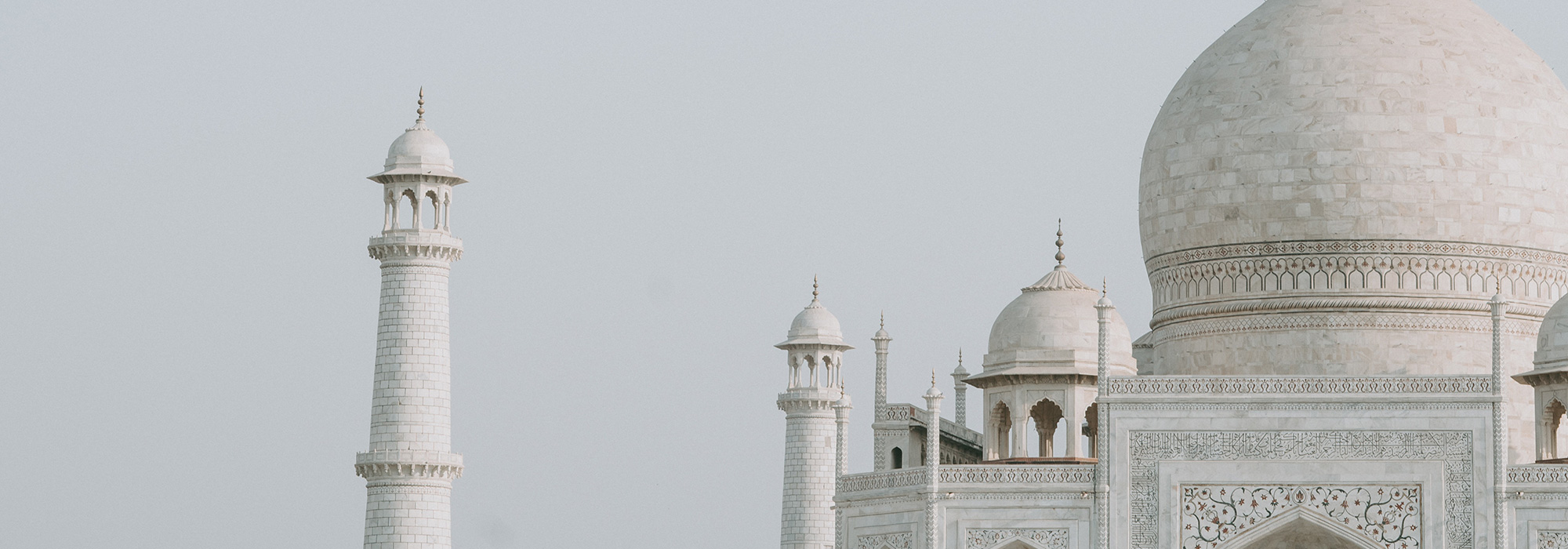- 1300 761 980

We dig a bit deeper into India’s famous ‘Golden Triangle’…. Encompassing the three cities of Delhi, Agra and Jaipur, the iconic trio form a triangle on a map, Our India Tours and Travel Specialists share their Top 5 must-sees in the Golden Triangle…
A trip to India is not complete without seeing the Taj Mahal. The Taj was built by Mughal Emperor Shah Jahan in memory of one of his wives, Mumtaz Mahal. This impressive marble structure is a sight to behold and the inside is even more remarkable.
The magnificent marble mausoleum continues to stand tall over 350 years since it was built. It survived the Indian Rebellion in 1857 where British soldiers chiselled out precious gemstones and tarnished the structure.
An architectural symbol of love, you simply can’t skip seeing the Taj Mahal.
An intricate and complex fort, the Amber Fort in the town of Amer is the most visited site in all of Jaipur. Built from yellow and pink sandstone as well as marble, this marvel dates back to the 16th century. It truly is an architectural wonder.
The fort was home to 28 Kings of the Kachwaha dynasty before their capital was moved to Jaipur.
In the evening, there is a spectacular sound and light show depicting the rich history of the fort going back over 600 years. The show is displayed on the fort itself and highlights local folklore, through music and the visual display.
It is believed that the initial construction of the monument began in the early 12th century by the first ruler of the Delhi Sultanate, Qutab-ud-din Aibak.
Aibak’s successor and son-in-law, Iltutmish added three more stories in the 13th century. The top minaret is believed to have been struck by lightning in 1369 and destroyed. Firoz Shah Tughlaq rebuilt the structure adding another story.
Both a UNESCO World Heritage and one the highest brick minarets in the world, as well as one of India’s most famous historical landmarks, Qutab Minar is a must see.
Said to be one of Mughal architecture’s most significant and ancient monuments, the Agra Fort features 21.4m high walls enclosing a 94-acre imperial city. Known as the “Red Fort” because of the red sandstone used to build it, the fort is home to palaces and structures built over time by multiple generations of Mughal royalty.
The initial construction of the red sandstone fort began a few years after Emperor Akbar arrived in Agra. He constructed the fort on the same site as the remains of an ancient site known as Badalgarh. Conception of the fort began in 1565. Eight years later in 1573 it was complete. Akbar and his thousands of workers built most of the structures in the fort. However, unfortunately many do not exist anymore. In the years following Akbar’s death, his successors added palaces and other structures within the fort.
The history of the Agra fort dates back beyond Emperor Akbar, to the 11th Century. During this time, it was not in the possession of the Mughals. However, its restoration by Akbar in the 16th Century is what makes the fort such an important part of Indian history and architecture.
Built during the 16th century by Emperor Akbar, Fatehpur Sikri (the City of Victory) was the first Mughal planned city. It was the capital for 10 years.
The complex comprises of various palaces, forts, halls and mosques. Home to the famous Jama Masjid – one of the largest mosques in India.
This World Heritage Site is one of the most visited sites in India, boasting an incredible history. This important site in the Golden Triangle is one of Emperor Akbar’s greatest legacies.
Suite 2, 1st Floor
261-271 Wattletree Rd
Malvern VIC 3144



For tailor-made itineraries or enquiries…